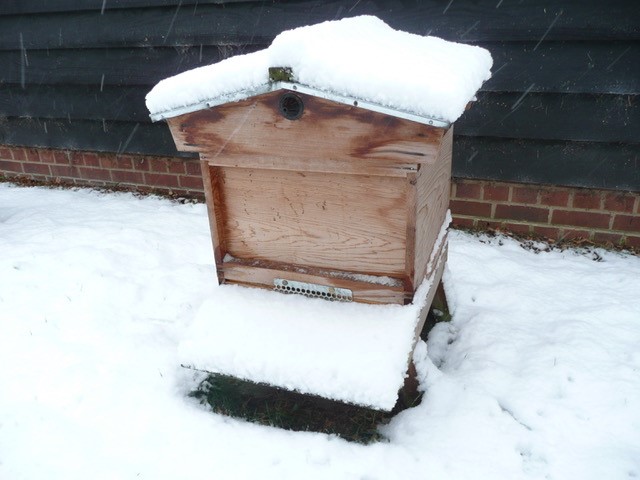Bee Blog February 2018
Hello,
I am Gerald Bushby (pronounced bush bee!) a beekeeper in Weston on the Green, a small village in Oxfordshire. I am going to be writing a monthly blog about the bees in my apiary. I hope you will find it interesting. I should start by saying that I am not an expert, having only kept bees for three years. Anything I say is my own personal opinion; I accept that there may often be other views and opinions.
February and I am hoping the worst of winter is behind us now. There is still little activity from both hives. There are a few cleansing flights if the weather allows but from outside observation you wouldn’t know that there are any bees in the hives at all. There is very little noise and I see most bees when I take off the roof to renew the fondant feed. The bees are best left undisturbed in their comfortable homes at this time of year.
The development of bees as pollinators led them to require a home environment where they could store the nectar they collected from flowers, turn it into honey as a long term food source and a space where they could defend their stores from predators. Wild colonies of bees found shelter in natural features such as caves and hollow logs. These days bees are still happy to use similar spaces but they are also happy to take advantage of any possible man made structures that may be available such as cavity walls and roofs spaces in buildings.
As long ago as Egyptian times man realized that collecting honey would be much easier if they provided the bees with a home they could live in, rather than having to rob wild colonies. The first designs of these “bee houses” was a simple upturned straw basked called a skep. Some people still use skeps even today. Indeed, I went on a skep making course last year and it is remarkable that even an unskilled person can construct a workable straw skep capable of housing a colony of bees in a day. In the UK early monasteries used straw skeps and constructed purpose built structures with shelves where several skeps could be housed. Evidence of these bee houses or boles can still be found in many old properties. Bee Boles can be seen at the Lost Gardens of Heligan.
The big disadvantage of skeps was that because of their simple design the colony had to be broken up to extract the honey. The system only worked if the colony produced enough bees to create a swarm, which could be caught and go on to be housed and provide the honey for the next year.
There was a great need for a way of keeping the same colony of bees year after year so that honey could be collected, retaining the colony so that year after year more honey could be produced and the apiary expanded. It was not until 1851 however that a breakthrough discovery in beekeeping was made which was credited to a man called Lorenzo Langstroth, a one time resident of Oxford (Ohio). Langstroth discovered the “bee space” a gap of 6 to 8 mm. He found that if a gap of less than this or more than this were left the bees would fill it up but a gap of 6 to 8 mm was the size of a bee pathway and would be kept clear by the bees. This led to the development of hives with movable frames of comb with a bee space provided all around each frame and a bee space between each frame. This allowed the beekeeper to remove individual frames containing comb and honey without destroying the hive. It enabled the beekeeper to start manipulating the colony helping it to grow and is often cited as the start of modern beekeeping.
Minor developments have been made along the way but the Langstroth hive is still the most commonly used hive in the USA and in many other parts of the world. In the United Kingdom we developed a variant called the British Standard Hive and the Commercial Hive. The fundamental of these designs depends on Langstroth’s “bee space” however and is common in all these types of hives.
I am a proud supporter of the ‘Bees for development’ charity, my love of the bee drew me to this wonderful UK based charity and the great work they do around the world with Bees and the impact they can have on people’s lives. Please help me support this wonderful organisation, as 2BScientific will be doing with donations to this hard-working charity.
Next time : Any signs of Spring?, low tech and hi tech hives.
